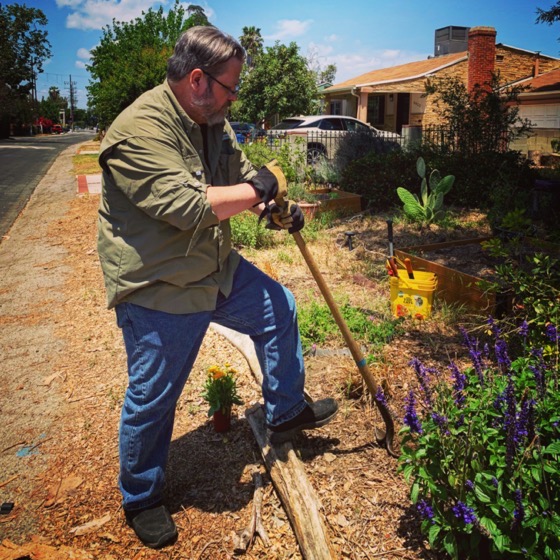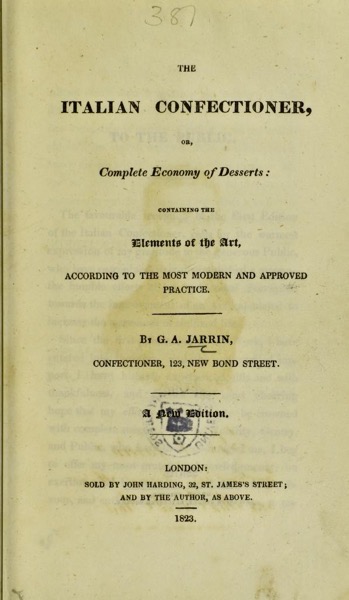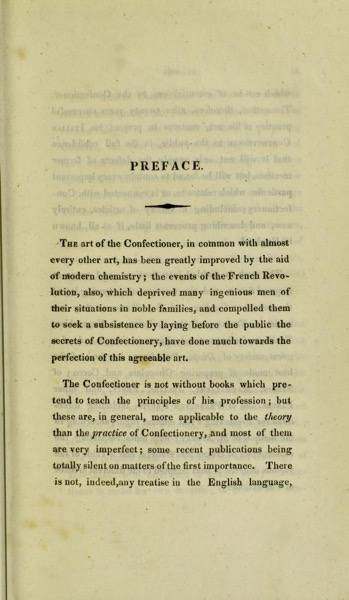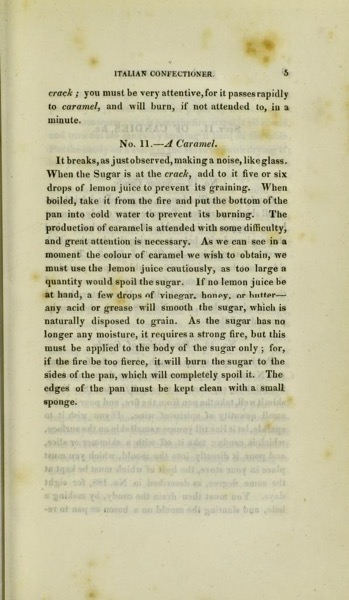Historical Cooking Books – 80 in a series – The Italian confectioner (1823)
Available in PDF, Text, JPG formats, and more
PREFACE.
The art of the Confectioner, in common with almost every other art, has been greatly improved by the aid of modern chemistry ; the events of the French Revo- lution, also, which deprived many ingenious men of their situations in noble families, and compelled them to seek a subsistence by laying before the public the secrets of Confectionery, have done much towards the perfection of this agreeable art. The Confectioner is not without books which pre- tend to teach the principles of his profession ; but these are, in general, more applicable to the theory than the practice of Confectionery, and most of them are very imperfect ; some recent publications being totally silent on matters of the first importance.
No. 11 . — A Caramel . It breaks, as just observed, making a noise, like glass. When the Sugar is at the crack , add to it five or six drops of lemon juice to prevent its graining. When boiled, take it from the fire and put the bottom of the pan into cold water to prevent its burning. The production of caramel is attended with some difficulty, and great attention is necessary. As we can see in a moment the colour of caramel we wish to obtain, we must use the lemon juice cautiously, as too large a quantity would spoil the sugar. If no lemon juice be at hand, a few drops of vinegar, honoy. or butter — any acid or grease will smooth the sugar, which is naturally disposed to grain. As the sugar has no longer any moisture, it requires a strong fire, but this must be applied to the body of the sugar only ; for, if the fire be too fierce, it will burn the sugar to the sides of the pan, which will completely spoil it. The edges of the pan must be kept clean with a smalL sponge.
See More:
- Publication date 1823
- Topics Desserts, Confectionery
- Publisher London : sold by John Harding; and by the author
- Collection leedsuniversitylibrary; ukmhl; medicalheritagelibrary; europeanlibraries
- Digitizing sponsor Jisc and Wellcome Library
- Contributor University of Leeds Library
- Language English
Get these aprons for your cooking adventures.
* A portion of each sale from Amazon.com directly supports our blogs
** Many of these books may be available from your local library. Check it out!





